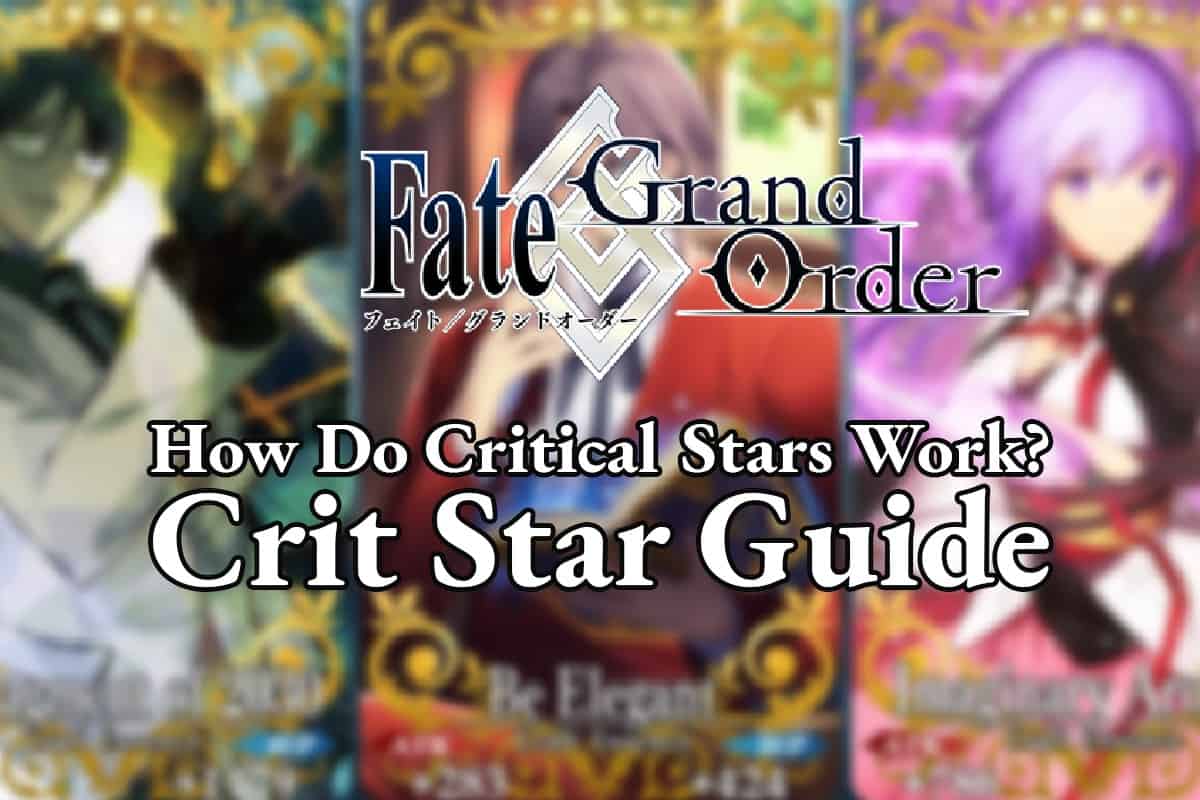
Closing out the core card mechanics beyond NP Generation and Damage is Critical Star Generation. This one’s a bit less understood, partially because skills and Craft Essences that allow you to bypass it to a certain extent. Where there’s no substituting anything else for damage, and NP charge is hard to place, crit stars can be manipulated in enough ways that certain compositions can generate enough without ever using a card.
Critical Star Generation is unlike most other game mechanics. It avoids almost all multiplicative stacking and has a cap. It even pairs directly with another mechanic that changes how much you need to produce. Understanding how star generation and star weight function can help you keep crits flowing and double almost every non-NP feature of your Servants.
Flat Star Production
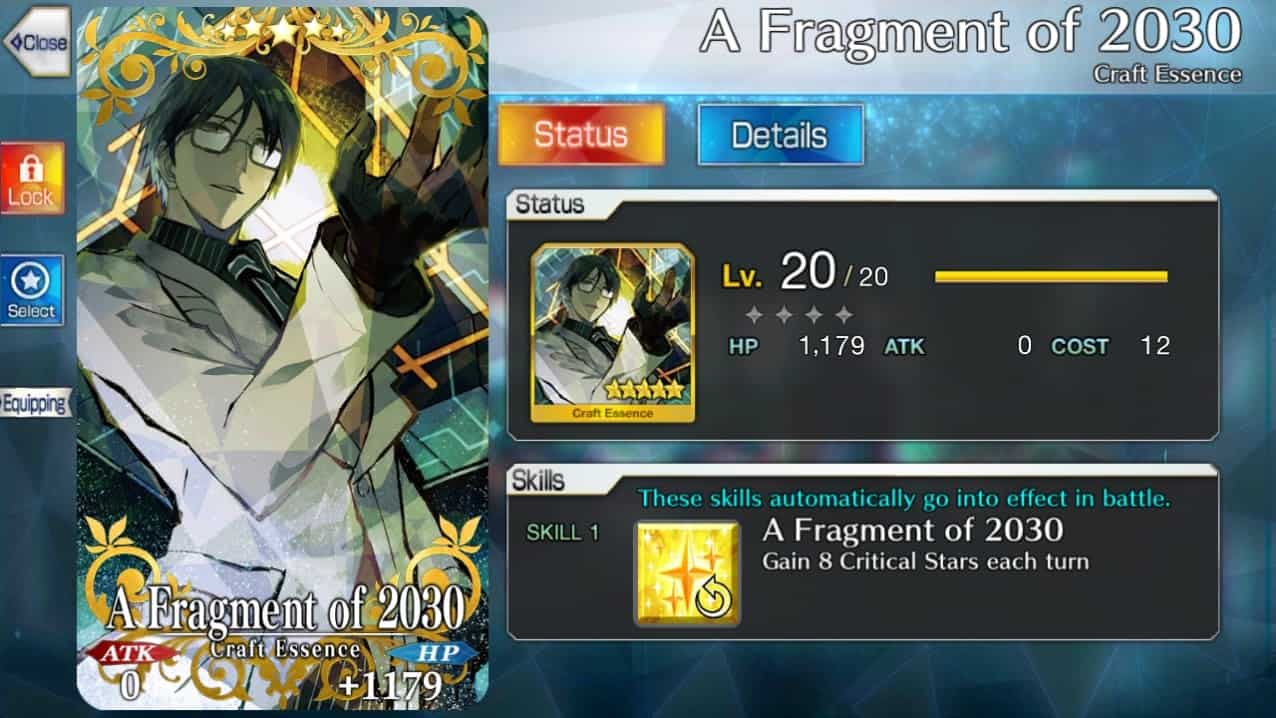
It’s impossible to discuss this topic without addressing the elephant in the room. Flat star production can, at times, completely replace the active use of cards for stars. It takes investment, and there’s a real opportunity cost to be discussed in how many CE slots it eats, but when you can produce 20-30 stars passively each turn it solves most crit problems already. That said, not everyone has access to the CEs and supports to do this, and even if they do, there are good reasons to consider not doing so.
Foremost among flat star production options are CEs, particularly A Fragment of 2030. This extremely popular CE can be put onto supports to produce 8 (10 with max limit break) stars every turn. This illustrates why the strategy is powerful, your damage-light characters can produce stars effectively without actually using their cards. This means you get more crits on more valuable DPS and Support Arts cards, and spend less trying to line up quick chains hopefully before a good damage turn. The consistency is huge and makes sure you always have stars waiting every turn.
Next, and far less used despite their extremely solid power are Innocent Monster style effects. At their core, IM skills and NPs are pretty much the same as 2030, they provide passive star regeneration. However, most of them produce 9-10 stars at maximum level and have some secondary upside.
Originally, IM had a downside associated as it lowered the character’s defense while giving them the star production; only extremely early release characters still have this and frankly speaking, the skill is busted with the defense down so versions that have an upside instead are a bit nuts. Taking two IM style effects and two 2030s, as in the popular Merlin-Hans support setup, begins to produce nearly 40 of your 50 stars every turn, passively.
Star Weight
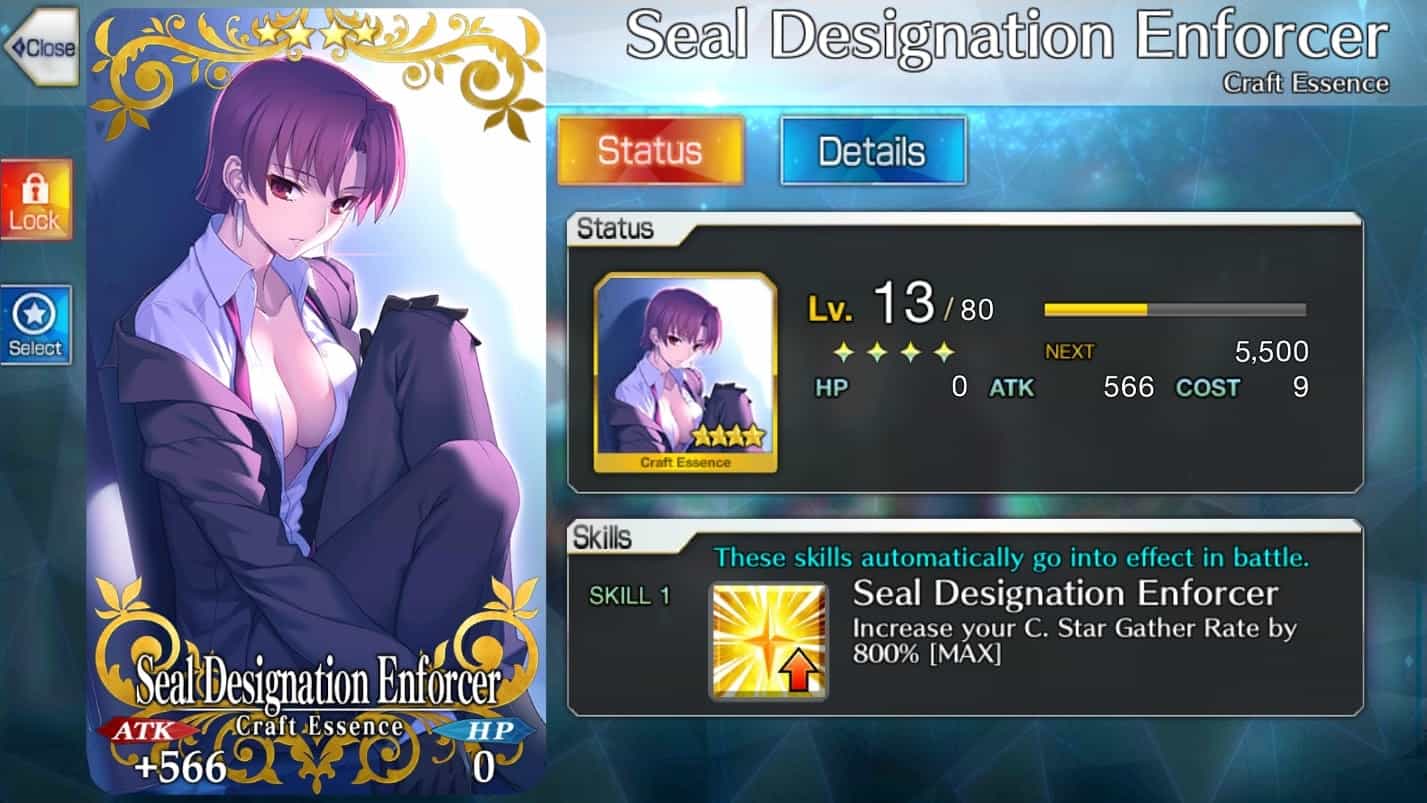
Understanding star production would be pointless without discussing star weight. Knowing how much you actually need to produce to get consistent crits is a huge part of the puzzle. To start, be aware that this is weighted randomness, it’s not a perfect science, bad or good luck can create or fix a star weight problem. You can only try to mitigate the randomness, but barring a 100% reduction in star weight to a character, there is always a non-zero chance a star doesn’t go where you want it.
With that said, you can push the weights extremely far. The basic star weight CE, Seal Designation Enforcer provides an 8x multiplier. This means that as a baseline most star weight modifiers make someone massively more likely to receive stars, and it’s not unheard of to see even 30x multipliers to star weight. This makes the randomness really unlikely to bite you. But not all base star weights are equal, and increases are always multipliers to your base. Each character has slight variations, but generally, star weights are by class.
| Class | Star Weight |
| Saber | 100 |
| Lancer | 150 |
| Archer | 90 |
| Rider | 200 |
| Caster | 50 |
| Assassin | 100 |
| Berserker | 10 |
| Avenger | 30 |
| Ruler | 100 |
Each individual card has this weight, and you can think of it a little like the number of spaces on a wheel that character’s cards get. Every star spins that wheel and goes to the card it landed on. So, in a hand with two rider cards and three caster cards, there are 400 spots that lead to the Rider’s cards and 150 to one of the Caster cards. Certain skills can buff the star weight of individual card types so that can further narrow the cards you pull crit chance to. As always, a single star is 10% crit chance, so a decently high crit weight compared to the other two characters on a team could make something like 30 stars usually enough.
Card Star Production
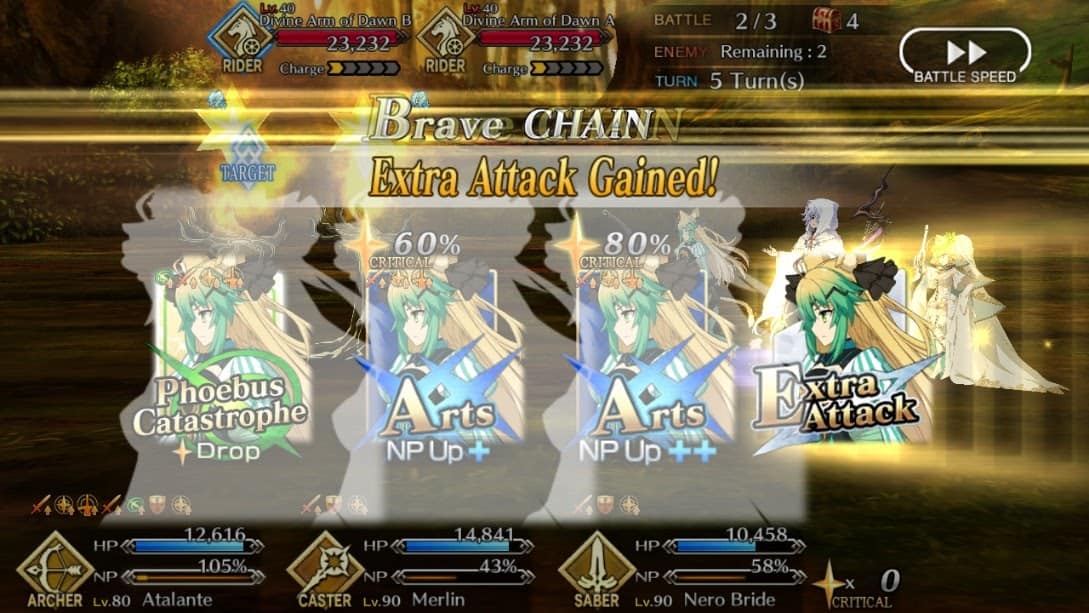
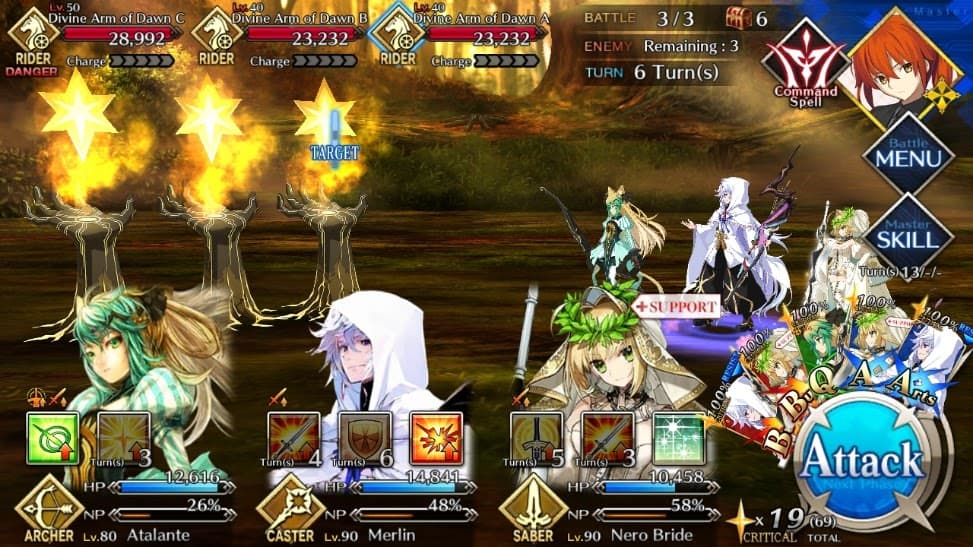
I know what you’re thinking: “where’s the formula?” This time you really don’t need one. It’s as simple as adding together all your sources of star generation. The only multiplication that takes place is during Card Performance buffs. That said, there’s still a lot to understand here, and a lot of different numbers to consider. First, each card has a base star generation value. Unlike NP Charge this is added to your base star generation, not multiplied by it. If you use a quick card in the First position you get a flat 20% bonus (That is to say not multiplied by Card Performance); as usual, NP cards do not get the first card bonus. Arts cards have a 0% star rate regardless of position and must get any star production externally.
| Quick | Buster | Quick with 1st Quick | Buster with 1st Quick | |
| 1st Position | 80% | 10% | 100% | 30% |
| 2nd Position | 130% | 15% | 150% | 35% |
| 3rd Position | 180% | 20% | 200% | 40% |
It’s at this point that we already need to discuss star generation going above 100% and its 300% cap. Each time you reach a multiple of 100% you guarantee a star from each hit and any excess is your chance for another star. In the case of third position quick cards, this is frequently going to mean it’s guaranteed to generate 2+ stars per hit when you factor in your Servant’s base star production stats. This also makes heavy quick buffing quickly reach the cap without any other buffs. A character with a fairly standard 50% “Mana Burst” for Quick cards and a standard Quick Performance CE (10-25%) will cap their position 3 Quick cards.
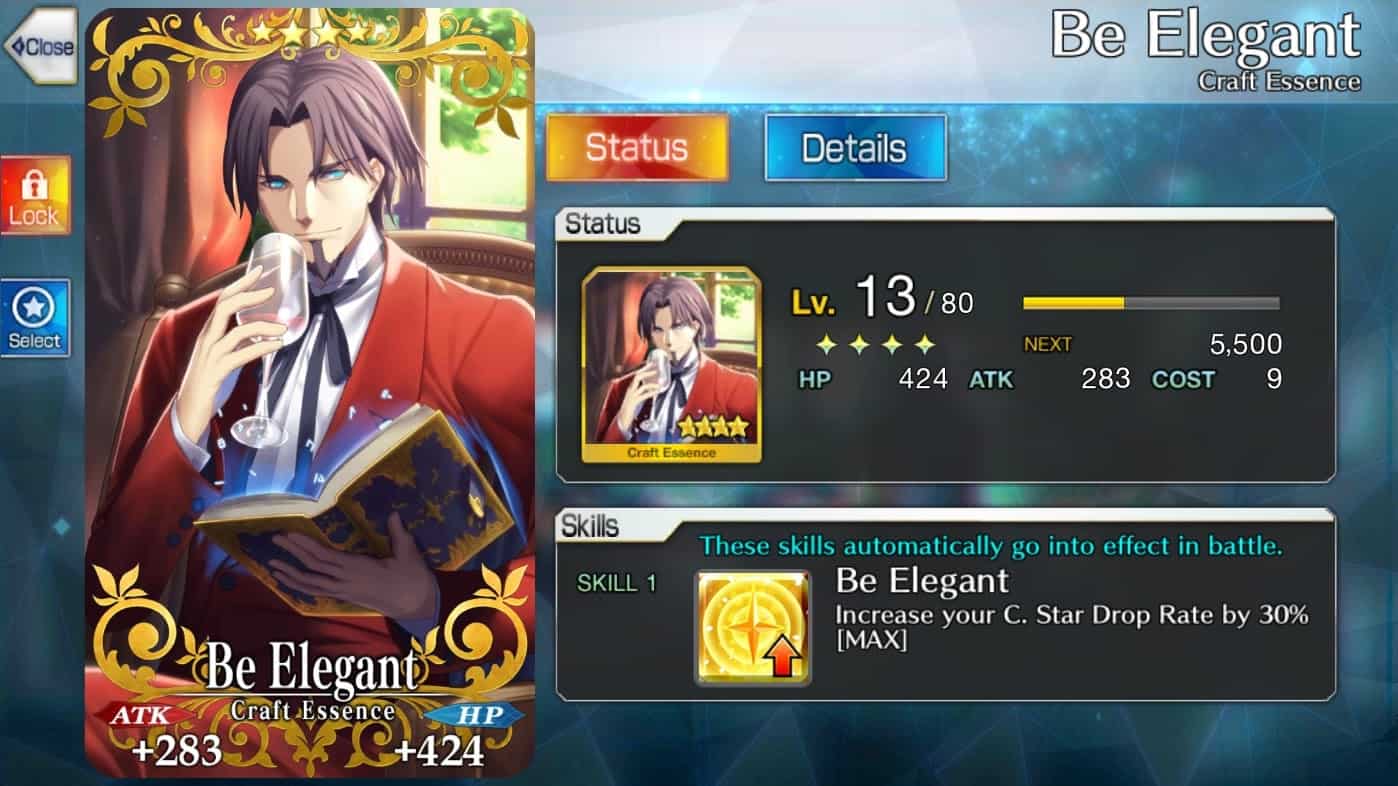
From there forward, Crits, Overkill, and increased Star Generation all provide flat buffs. Crits are +20%, Overkill +30%. Making crits massively helpful for Buster and Arts star production, but pretty meaningless for Quick cards. Actual star generation buffs like that of Be Elegant are added on wholesale and can be very good though again mostly for Buster and Arts cards, you’ll get more star production out of quick cards with Quick Performance than anything else.
